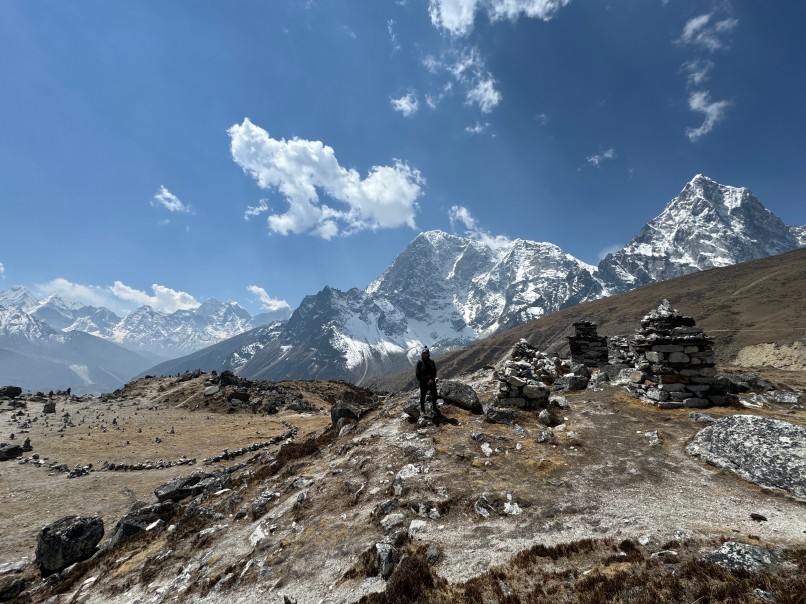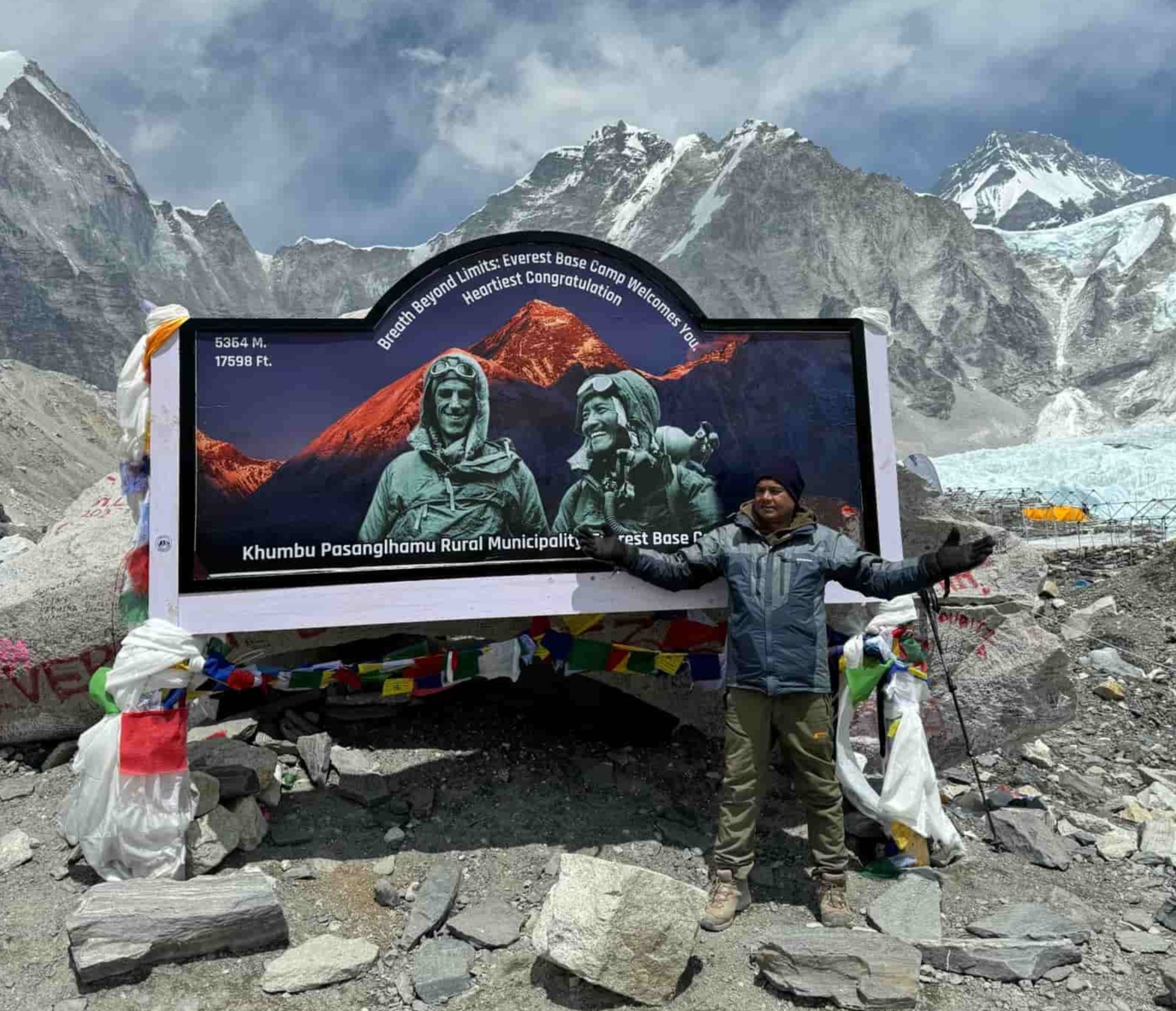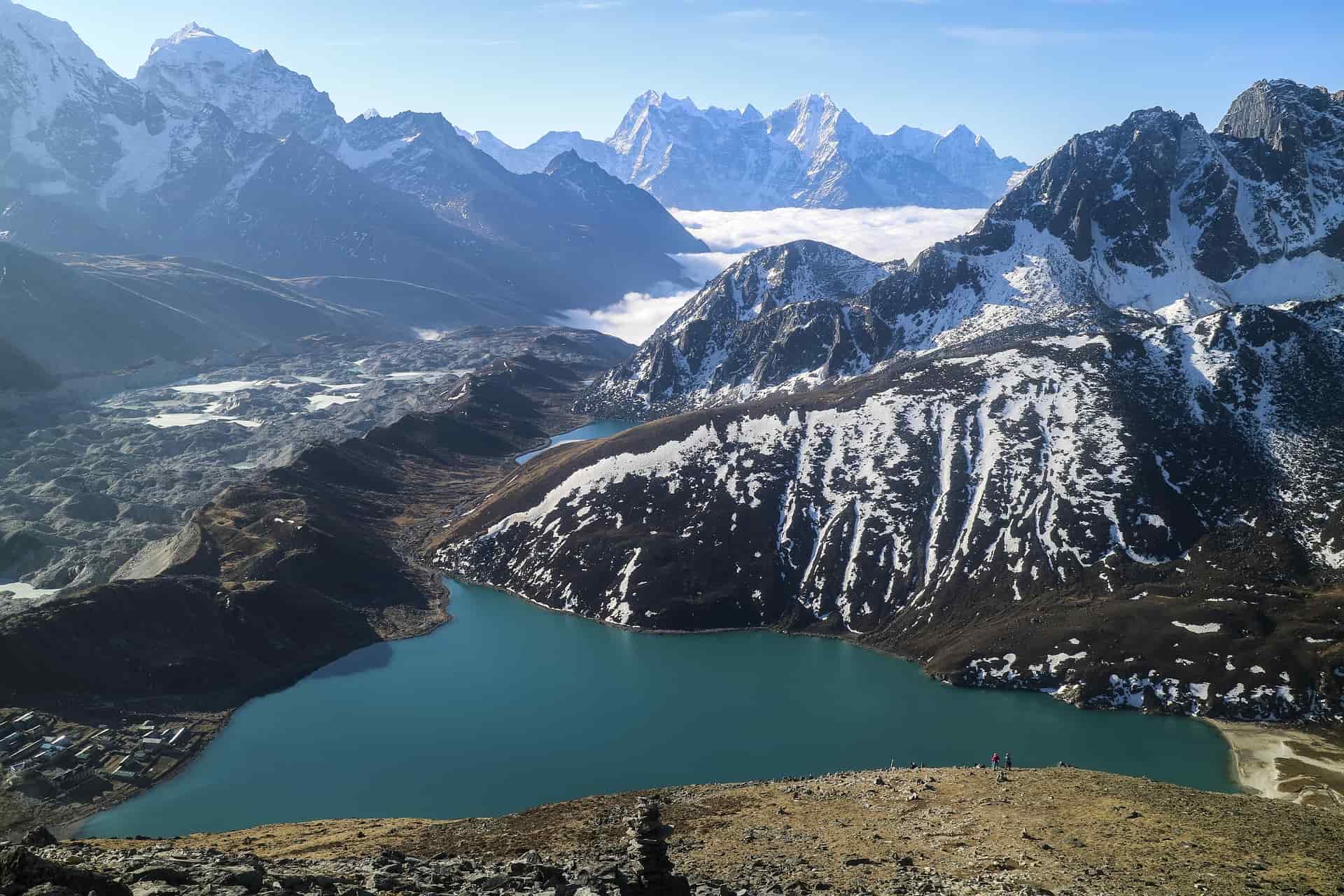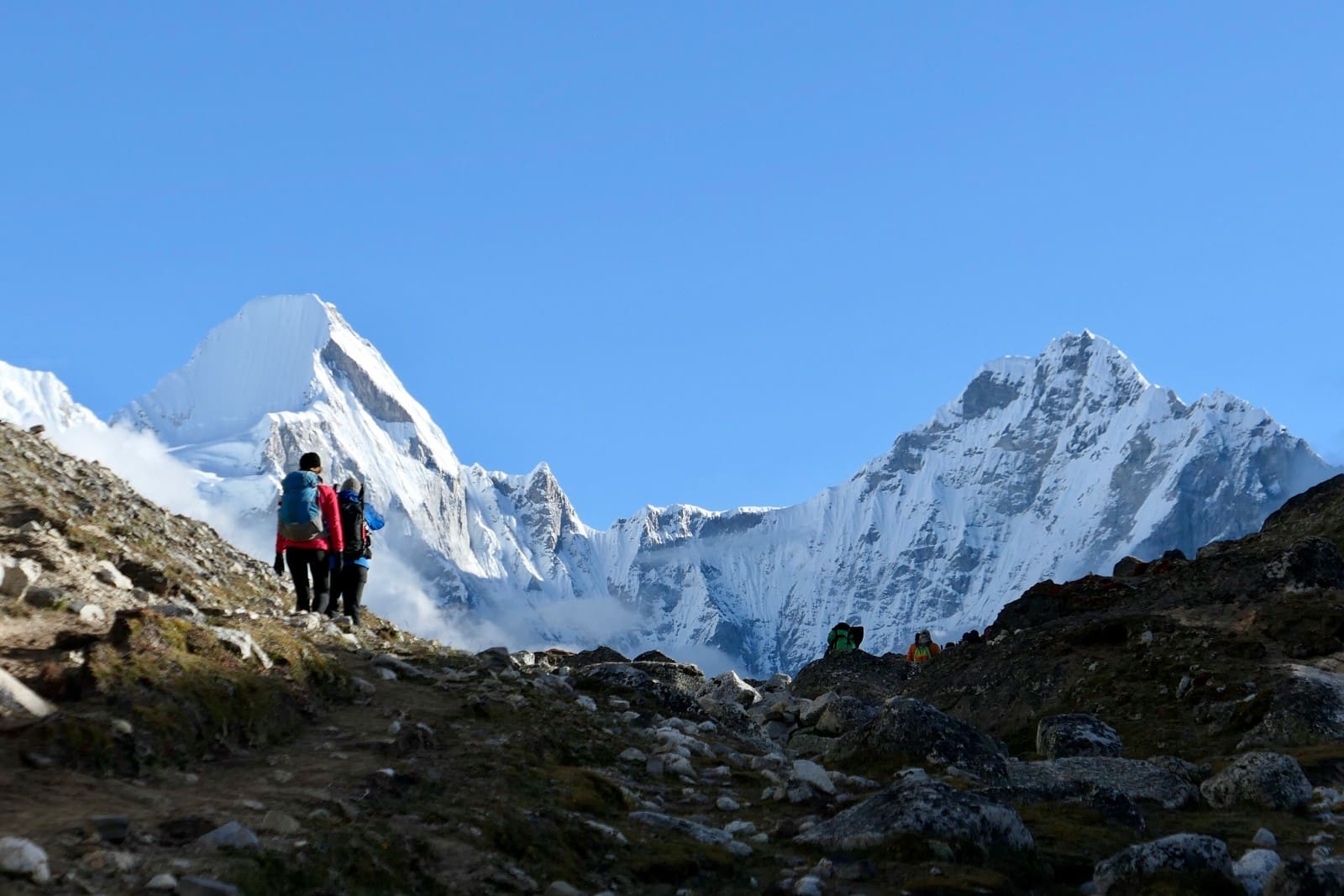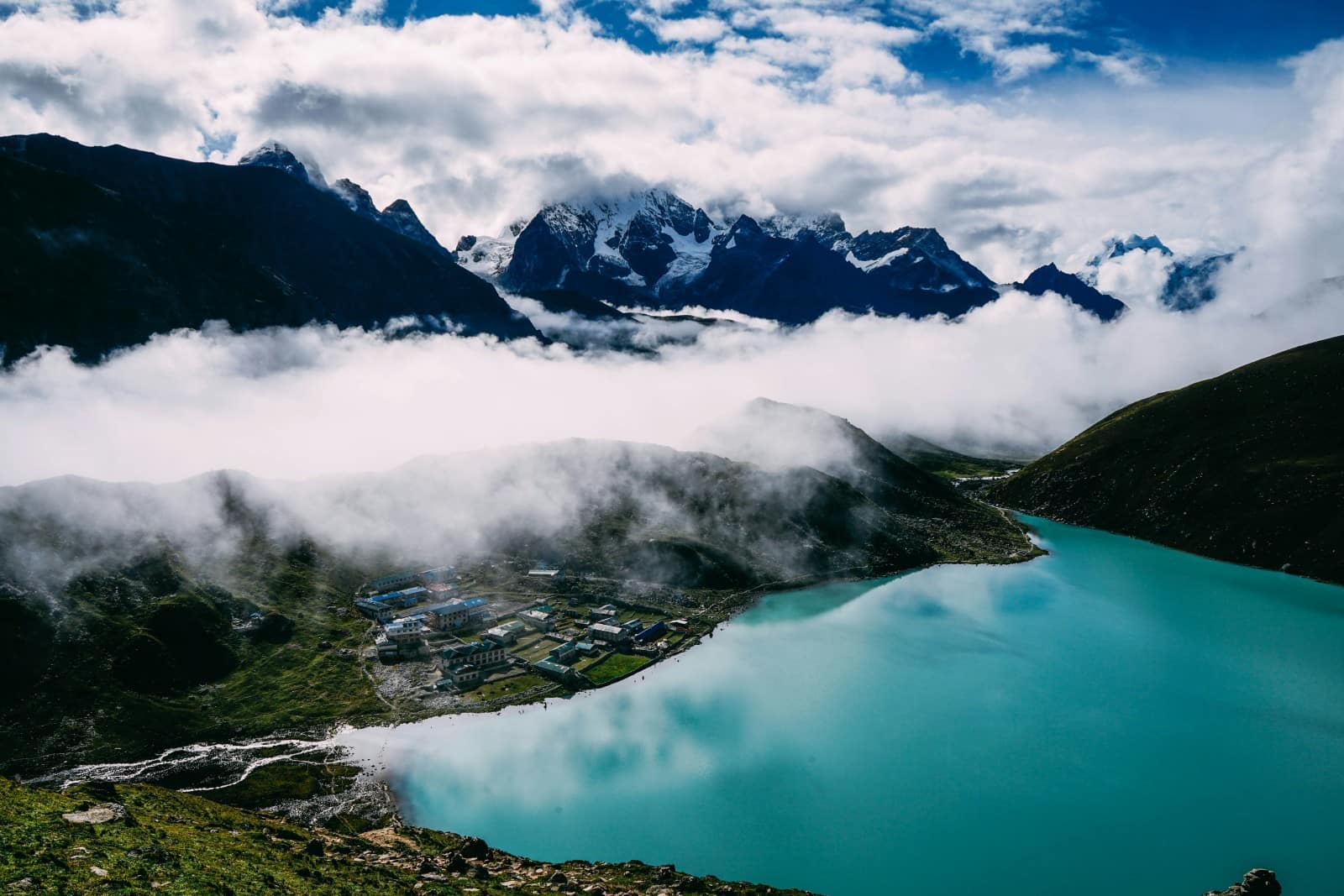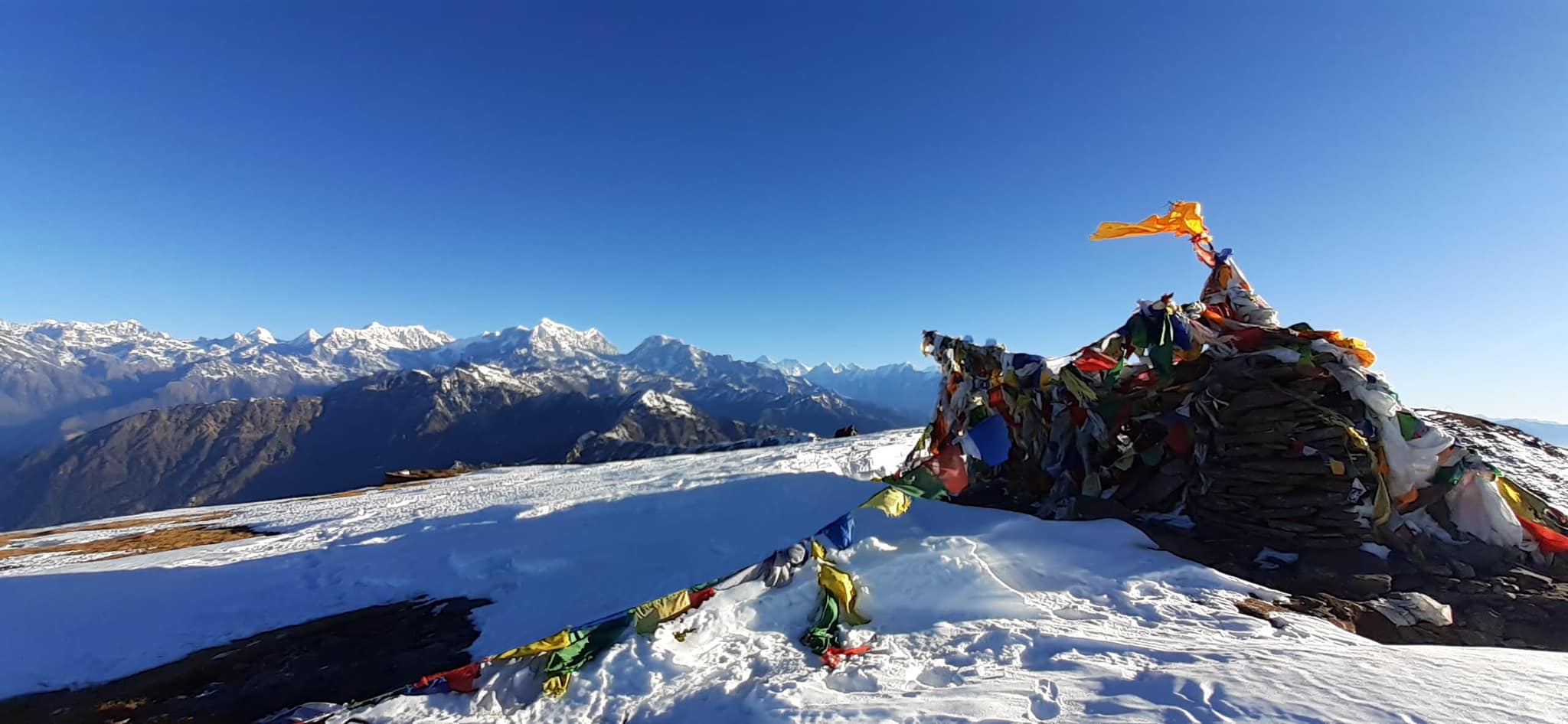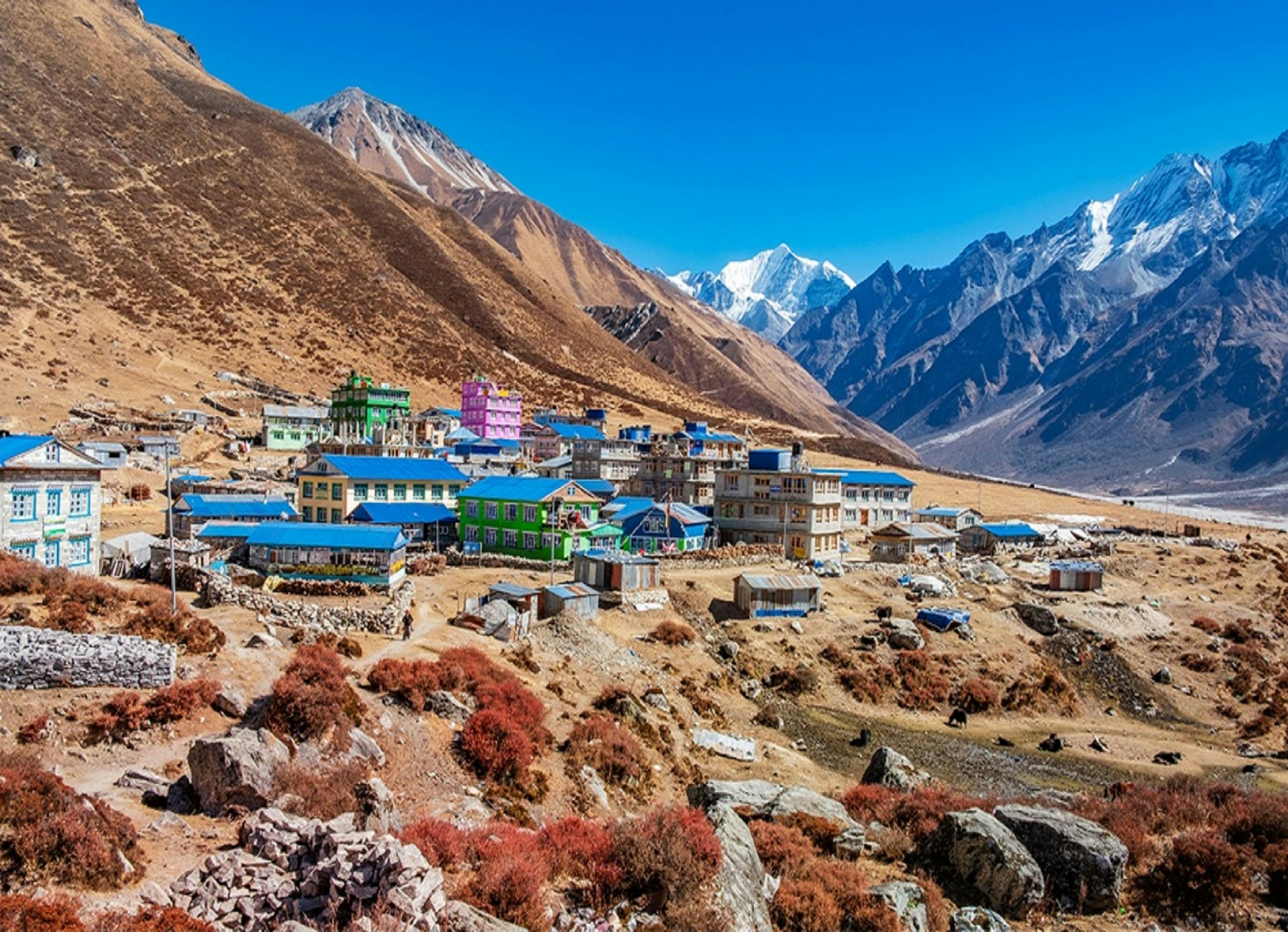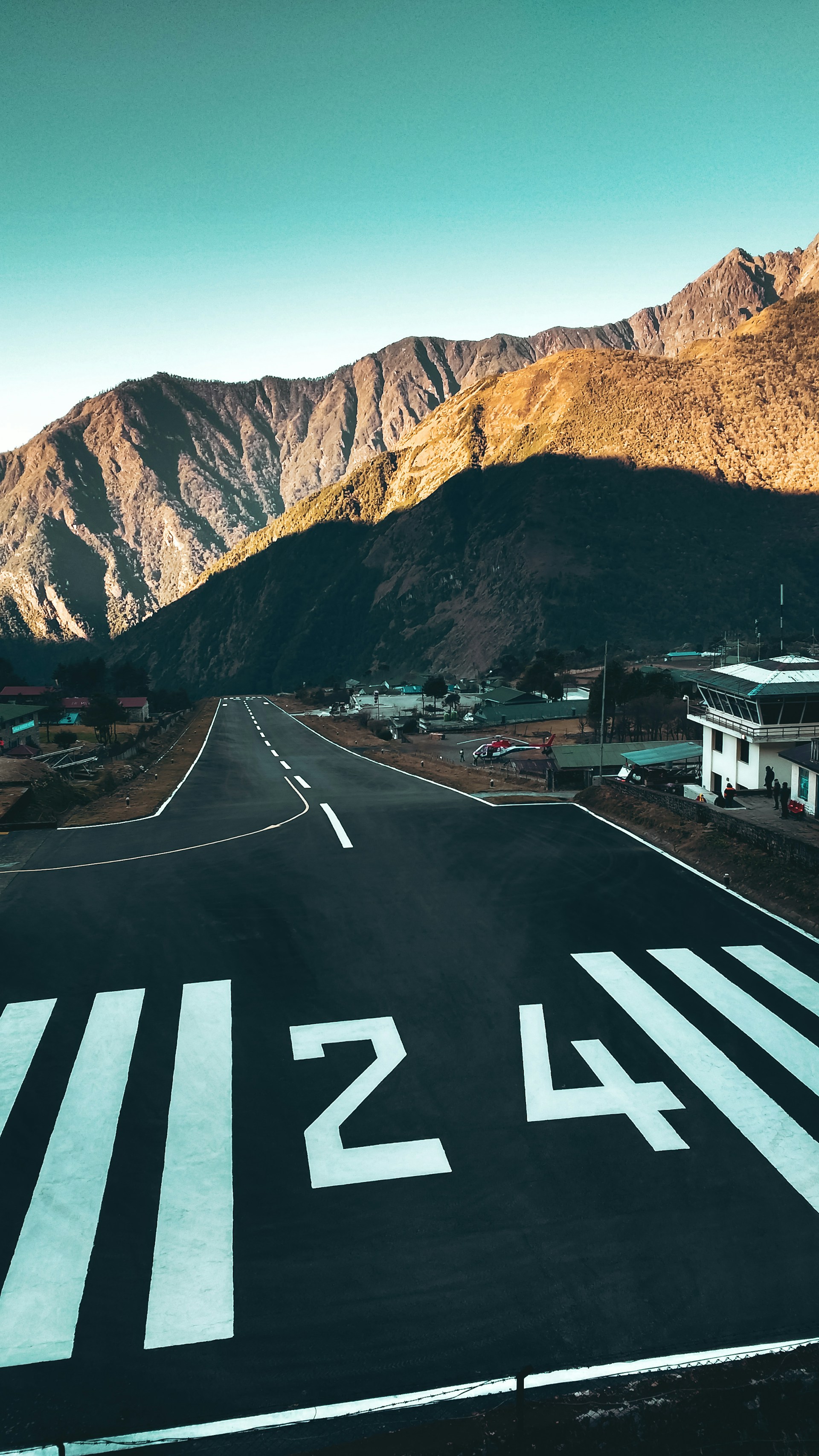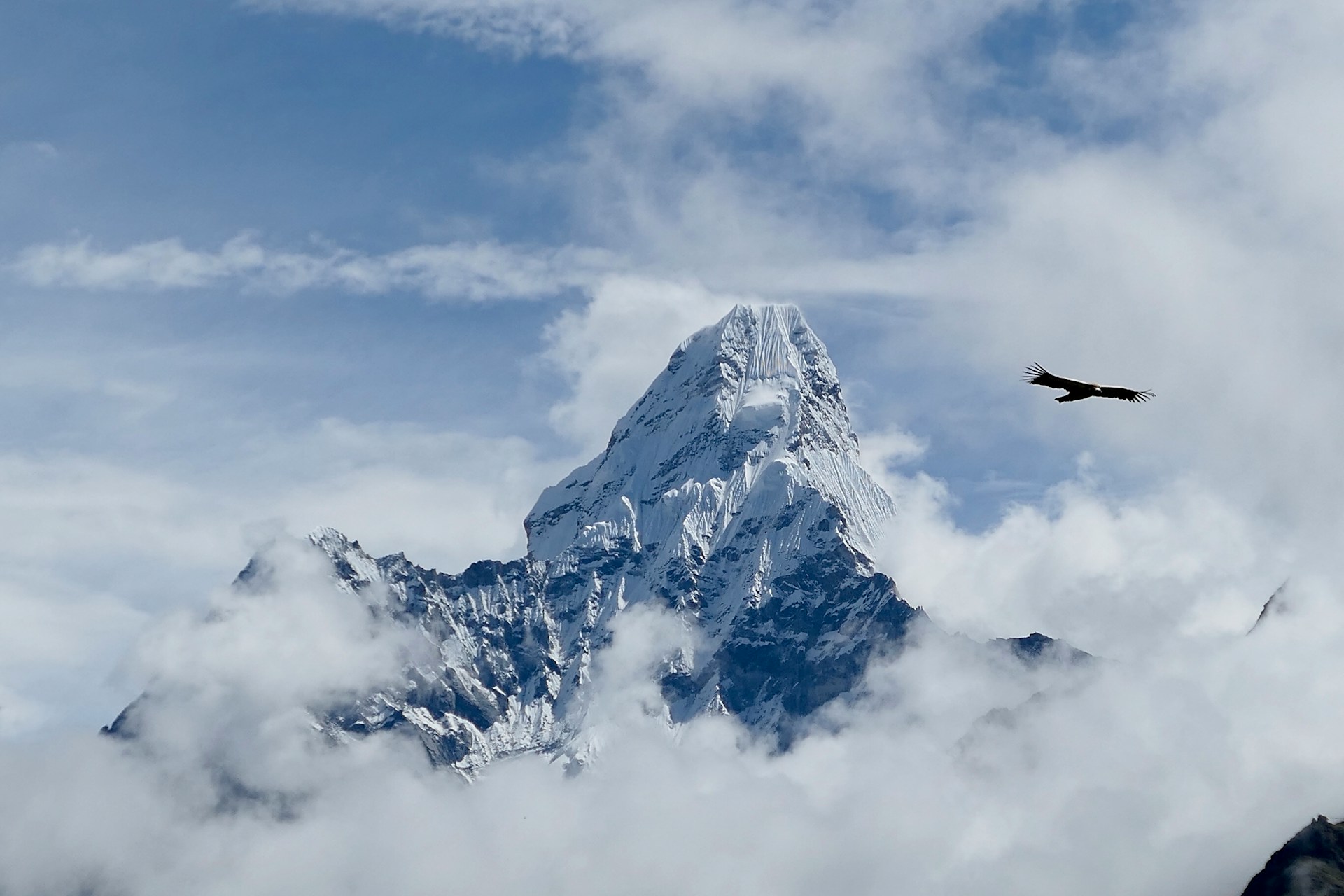When planning your trip to Everest Base Camp, it's important to budget for permits, places to stay, and transportation to get the best prices. Look into different times of the year to trek, especially the spring (March to May) and fall (September to December) seasons. These times are good because fewer people and better weather make your trek more enjoyable. By planning early and booking in advance, you can save money, avoid busy times, and have a great time exploring the beautiful Himalayas.
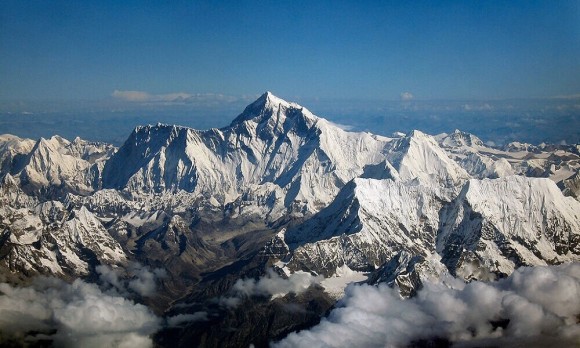
Experience the breathtaking beauty of a snow-covered mountain, with its pristine white peaks standing tall against the serene sky.
Expenses for the Everest Base Camp trek
1. Permits and Fees:
To trek in the Everest region, it is necessary to obtain permits. One of the essential permits is the Sagarmatha National Park Entry Permit, which grants access to the national park where Mount Everest is situated. Additionally, trekkers must obtain the TIMS (Trekkers' Information Management System) Card. The TIMS Card is a registration system designed to enhance the safety and security of trekkers by providing their details to authorities and trekking agencies. These permits play a crucial role in conserving the park and ensuring the safety of trekkers throughout their journey in the Everest region. It's essential to note that permit costs can fluctuate depending on the season, so it's wise to plan accordingly and budget for these expenses.
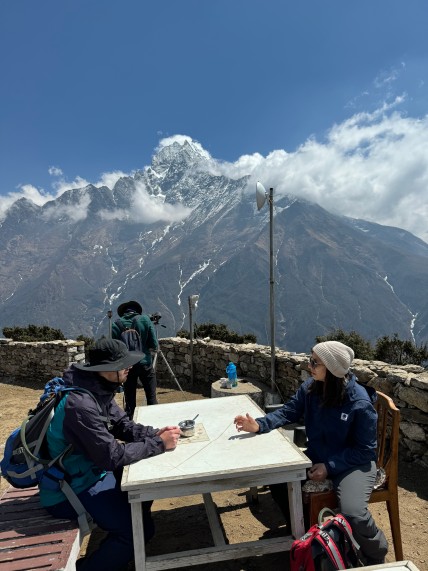
Relax and savor a warm cup of tea while sitting in the midst of stunning mountain views. Perfect for unwinding and soaking in nature’s beauty.
2. Hiring Guide and Porter Fees
While trekking independently is an option, many trekkers hire local guides and porters for added support and safety during their Everest Base Camp journey. Guide and porter fees at Everest Base Camp vary depending on the services provided and the trek duration. Generally, guides charge between $30 to $35 per day. They offer valuable expertise in navigating the terrain, understanding weather conditions, and sharing cultural insights, enhancing the overall trekking experience.
Porters' fees are typically based on the weight they carry. The costs vary accordingly, allowing trekkers to focus more on enjoying the journey amidst the stunning Himalayan landscapes without the burden of heavy gear. These fees not only ensure safety and comfort but also contribute to the local economy, supporting mountain communities and promoting sustainable tourism practices in the Everest region.
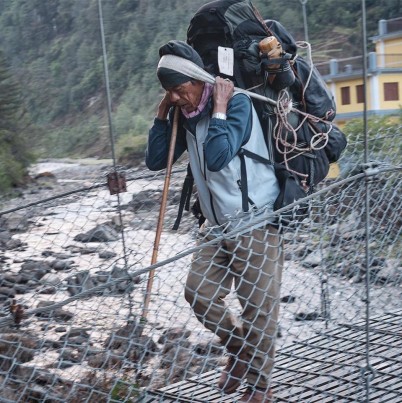
A determined old man carrying essential goods on his back, navigating through village/ hills bridge
3. Accommodation and Meals on the Trail
During your trek to Everest Base Camp, you'll come across various tea houses and lodges along the trail. These places offer places to sleep and meals to eat. They're strategically placed for trekkers to take breaks and enjoy food while soaking in the stunning views of the Himalayas. The cost of staying at these places can vary depending on where you choose to stay and what's available.
You'll find a range of meal options, from local Nepali dishes to more familiar Western food, typically costing around $30 to $35 per day. It's a good idea to budget extra for snacks, hot showers, and charging your devices to ensure you're comfortable throughout your trek.
In summary, these teahouses and lodges are essential stops for trekkers, providing necessary services and enhancing the experience with their beautiful locations and food choices.
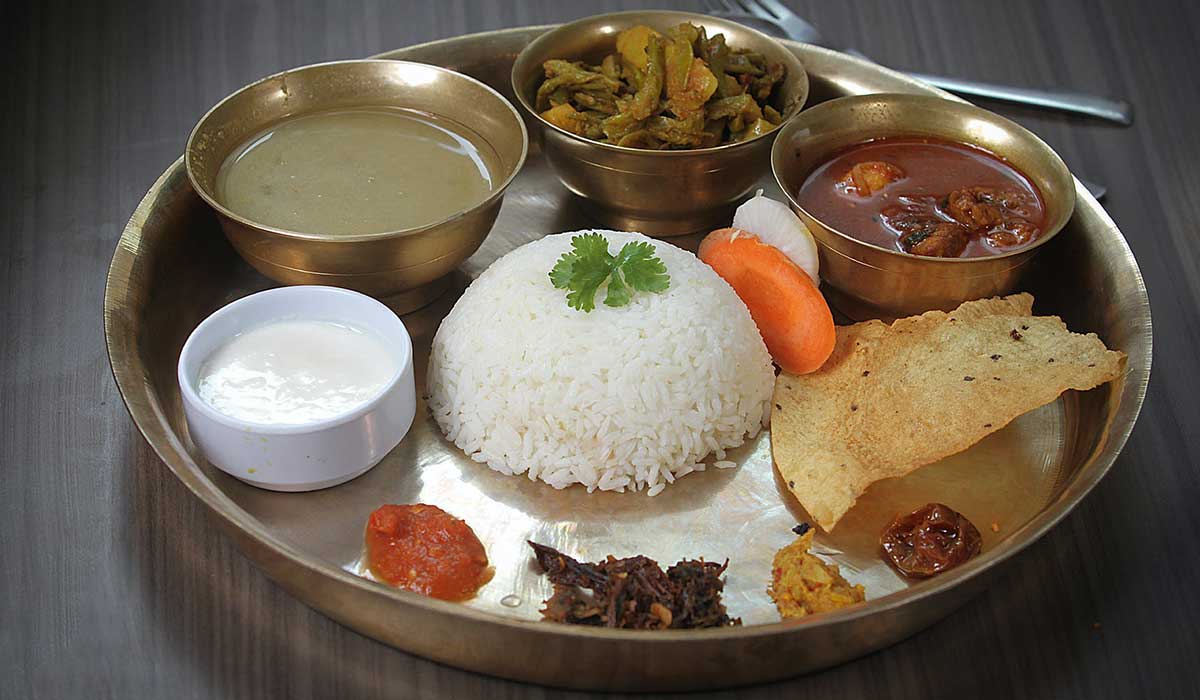
Dal Bhat, a traditional Nepali meal, offers a comforting mix of lentils, rice, and vegetables, perfect for fueling treks and daily life in Nepal.
4. Transportation to Get to Everest Base Camp
Kathmandu to Lukla: The Classic Flight Route
Starting your Everest Base Camp journey typically begins with a scenic flight from Kathmandu to Lukla, the gateway to the Khumbu region and the start of your trekking adventure. A round-trip flight can vary depending on the airline and season, ranging from $425 to $440. Trekkers need to plan their budget carefully for this expense.
Alternative Routes: Budget-Friendly but Time-Consuming
For those seeking a more budget-friendly option, some adventurous travelers opt for a bus journey from Kathmandu to Jiri. From there, they trek for several days to reach Lukla, enjoying scenic views while saving on transportation costs.
Safety First: Emergency Evacuation Planning
It's also crucial to budget for emergency evacuation services, which are essential for ensuring safety in case of medical emergencies or bad weather. By prioritizing safety and planning for transportation and emergencies, trekkers can embark on their Everest Base Camp adventure fully prepared to enjoy the stunning Himalayan landscapes.
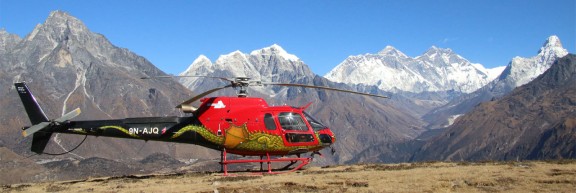
Experience breathtaking mountain vistas from the sky with a thrilling helicopter ride, offering a unique perspective of snow-capped peaks and the stunning landscapes below.
Equipment and Packing List For Everest Base Camp Trek
Essential Documents and Travel Items
- Passport: Ensure it's valid with extra passport-size photos.
- Photocopies: Keep separate copies of your passport, visa form, and insurance proof.
- Cash: Carry USD, GBP, or Euros for visa fees, meals, tips, and personal expenses.
- Credit Cards: Bring for ATM withdrawals and emergencies, along with photocopies.
Clothing Essentials
- Bandana or head scarf, also useful for dusty conditions
- Warm hat that covers your ears (wool or synthetic)
- Headlamp with extra batteries and bulbs
- Sunglasses with UV protection
- Prescription sunglasses (if required)
- Non-cotton underwear briefs
- 1 pair of Hiking shorts
- 1 pair of Hiking trousers
- 1 pair of lightweight thermal bottoms (seasonal)
- 1 pair of fleece or woolen trousers
- 1 pair of waterproof shell pants, breathable fabric
Feet
- 2 pairs of thin, lightweight inner socks
- 2 pairs of heavy poly or wool socks
- 1 pair of Hiking boots with spare laces (sturdy soles, water resistant, ankle support, broken in)
- 1 pair of trainers or running shoes and/or sandals
- Cotton socks (optional)
- Gaiters (winter only), optional, low ankle-high version
Sleeping Gear and Bags
- 1 sleeping bag
- Fleece sleeping bag liner (optional)
- Rucksack and Travel Bags
- 1 medium rucksack (50-70 liters/3000-4500 cubic inches, can be used for an airplane carry-on)
- 1 large duffel bag
- A small daypack/backpack for carrying your valuables should have good shoulder padding
- Small padlocks for duffle-kit bags
- 2 large waterproof rucksack covers (optional)
Medical Kit and Personal Care
- Small, personal first-aid kit (simple and light)
- Aspirin, first-aid tape, and plasters (Band-Aids)
- 1 skin-blister repair kit
- Anti-diarrhea pills
- Anti-headache pills
- Cough and/or cold medicine
- Anti-altitude sickness pills: Diamox or Acetazolamide
- Stomach antibiotic: Ciprofloxacin, etc. Do not bring sleeping pills, as they are a respiratory depressant.
- Water purification tablets or a water filter
- 1 set of earplugs
- An extra pair of prescription glasses, contact lens supplies
- Practical Items
- 1 small roll of repair tape, 1 sewing-repair kit
- 1 cigarette lighter, 1 small box of matches, if you do smoke
- 1 compass or GPS (optional)
- 1 alarm clock/watch
- 1 digital camera with extra cards and batteries
- large Ziplocs
- 1 water bottle (1 liter each)
- 1 small folding knife
- Binoculars (optional)
- 4 large, waterproof, disposable rubbish sacks
Toiletries essentials
- 1 medium-sized quick-drying towel
- Toothbrush/paste (preferably biodegradable)
- Multi-purpose soap (preferably biodegradable)
- Deodorants
- Nail clippers
- Face and body moisturizer
- Female hygiene products
- Small mirror
- Personal Hygiene
- Wet wipes (baby wipes)
Smart Budgeting Tips for Everest Base Camp Trek
1. Plan Ahead
Planning is one of the most effective ways to manage your budget for the Everest Base Camp trek. Begin by researching all the necessary permits, such as the Sagarmatha National Park Permit and the TIMS card, which are required for trekking in the Everest region. By booking your flights, accommodations, and transportation early, you can often secure better deals.
Choosing the right time to trek is also crucial. The shoulder seasons, spring (March-May) and fall (September-December), are ideal because they offer a balance between good weather and fewer crowds. During these periods, you'll find that accommodation prices are more reasonable and the trails are less congested, making for a more enjoyable and cost-effective experience.
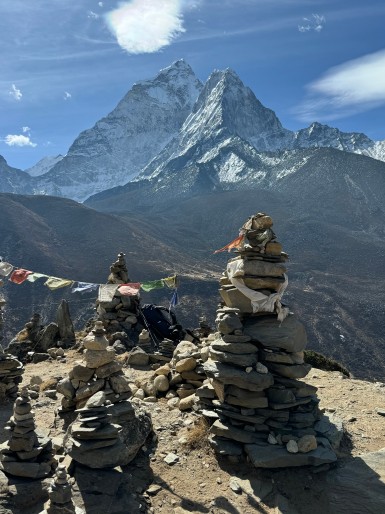
Discover the breathtaking beauty of snow-covered mountains paired with rugged rocky landscapes, offering a serene and awe-inspiring view of nature's wonders.
2. Pack Wisely
Packing efficiently is not just about convenience; it’s also about saving money. Start by selecting lightweight, moisture-wicking clothing that can be layered. Layering is essential for adapting to the variable weather conditions in the Himalayas, from warm days to freezing nights.
Invest in multi-purpose gear, such as a jacket that is both windproof and waterproof. High-quality items might have a higher upfront cost, but they’ll save you money in the long run by reducing the need to buy or rent additional equipment. A well-packed, lightweight bag also means you might avoid paying extra for baggage on flights to Lukla, the gateway to Everest Base Camp.
3. Eat Local
Eating local food is a great way to stick to your budget while also experiencing the culture. Along the Everest Base Camp trail, teahouses and lodges offer traditional Nepali dishes like dal bhat (a nutritious meal of rice and lentils) and momos. These meals are often cheaper than Western dishes and provide the energy needed for long trekking days.
By bringing snacks and energy bars from home, you can avoid buying expensive imported snacks along the trail. This strategy not only helps keep your costs down but also ensures you have consistent energy during your trek. Supporting local businesses by purchasing food and supplies from them also promotes sustainable tourism and contributes to the local economy.

Savor the vibrant colors and mouth-watering presentation of freshly prepared food served elegantly on a plate. Perfect for food enthusiasts looking to explore culinary delights.
4. Stay Hydrated
Staying hydrated is critical at high altitudes, but buying bottled water along the trek can add up quickly. Instead, carry a reusable water bottle and refill it at tea houses or natural water sources. To ensure the water is safe to drink, use water purification tablets or a portable filtration system. These methods are cost-effective and environmentally friendly, reducing your reliance on plastic bottles and minimizing your ecological footprint.
Proper hydration helps prevent altitude sickness, maintains your energy levels, and supports overall physical performance, making it essential for a successful trek.
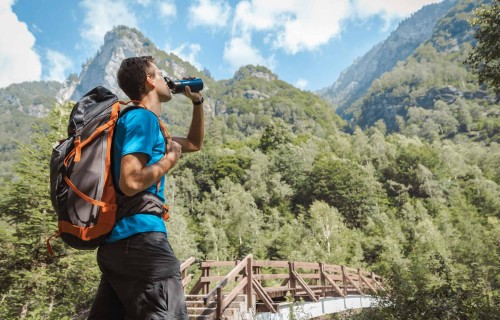
Enjoy the scenic beauty of lush green hills while trekkers take a well-deserved break, hydrating with fresh water. Perfect for nature lovers and hiking enthusiasts exploring the great outdoors.
5. Choose Teahouses Wisely
Teahouses are a popular and budget-friendly accommodation option along the Everest Base Camp trail. These simple lodges provide basic amenities like a bed, meals, and often a communal dining area. Staying in teahouses is generally more affordable than opting for higher-end lodges, and it also allows you to immerse yourself in the local culture.
To manage your budget better, book your teahouse stays in advance, especially during peak trekking seasons. This not only guarantees a place to stay but can also help you secure lower rates. Additionally, staying in teahouses supports local businesses and communities directly.
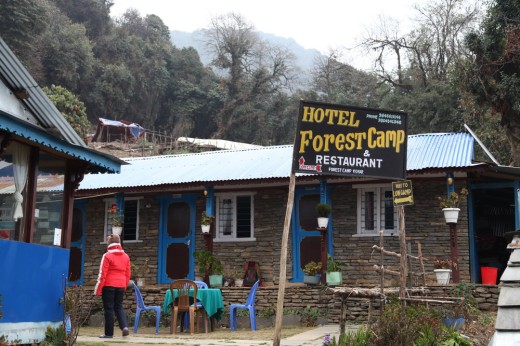
Experience the warmth and comfort of a tea house along your trekking journey, offering a peaceful stop amidst stunning mountain landscapes. Perfect for resting and enjoying traditional Nepali tea.
6. Travel with a Group
Joining a group trek is another effective way to reduce costs. When you travel with a group, expenses like guides, porters, and transportation are shared among the members, making the trek more affordable for everyone. Group treks also offer the added benefit of companionship, which can enhance your overall experience as you share the journey with like-minded adventurers.
Travel agencies often offer discounts for group bookings, so consider organizing a group trek through Vajra Adventure. This way, you can enjoy the social aspect of the trek while keeping your expenses in check.
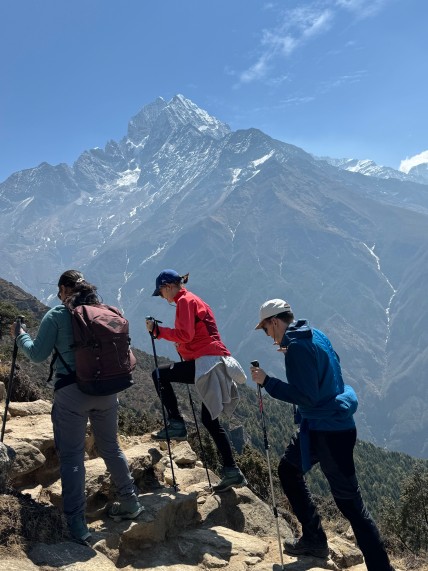
Explore beautiful trekking trails surrounded by stunning mountain views, offering a serene journey through nature’s landscapes. Ideal for adventure enthusiasts seeking breathtaking sights along their path.
Smart Planning Makes Everest Base Camp Dreams Affordable
At Vajra Adventure, we understand the importance of balancing cost and experience. By following these budgeting tips, you can make the most of your Everest Base Camp trek without overspending. With careful planning, smart packing, local dining, hydration strategies, wise accommodation choices, and group travel, you can enjoy a memorable adventure in the Himalayas while staying within your budget. Let us guide you through this incredible journey, ensuring an experience that is both affordable and unforgettable.
Popular Packages of Everest Region
Recent Blog Posts
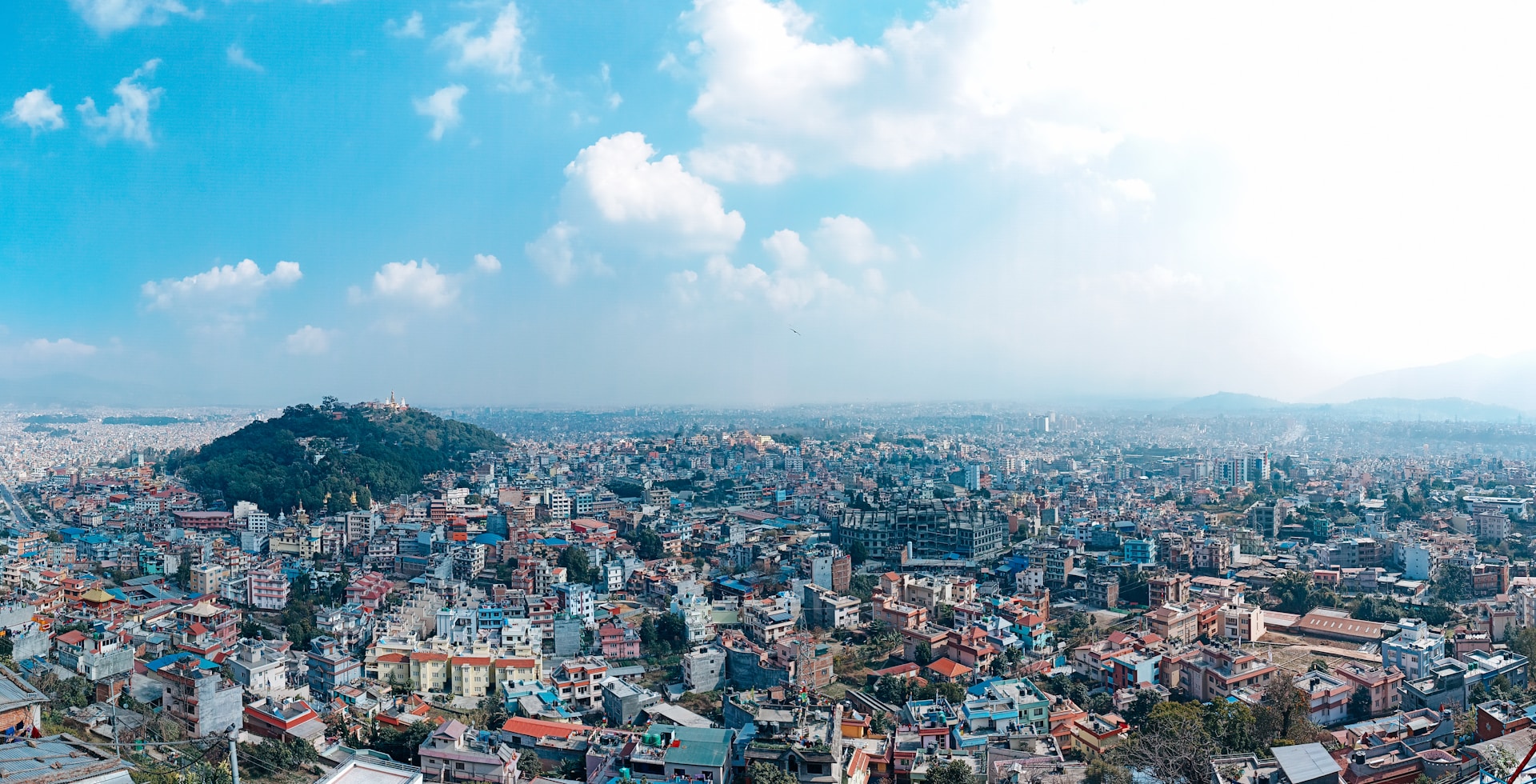
Kathmandu Valley: Exploring the Capital of Nepal
Jun 15, 2025
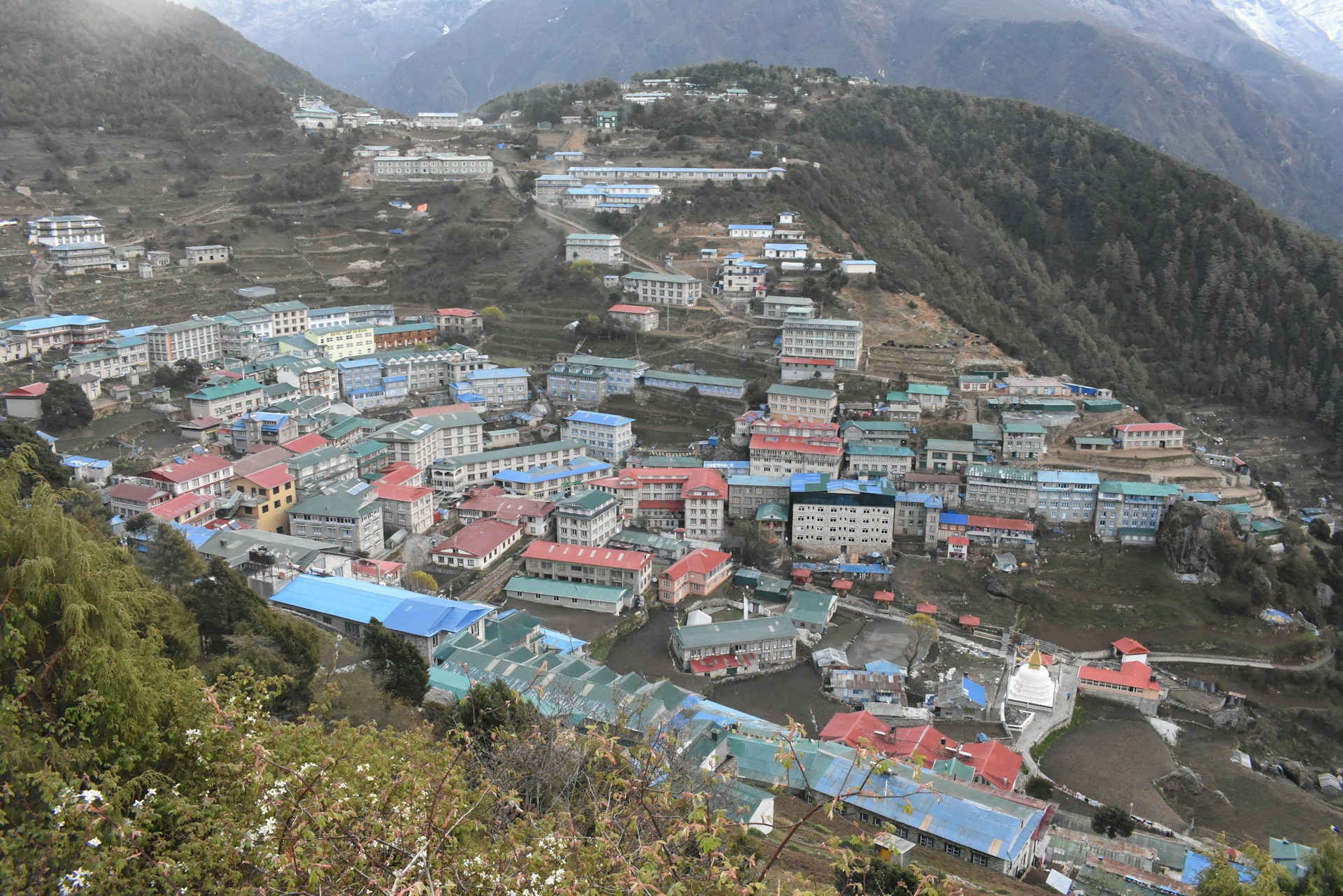
Namche Bazaar: What to Expect in the Sherpa Capital
May 20, 2025
